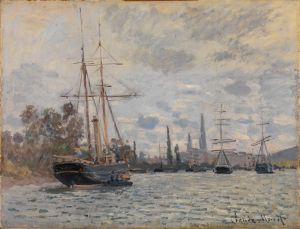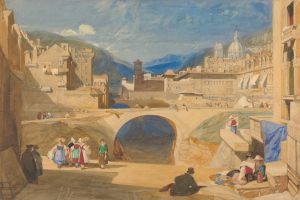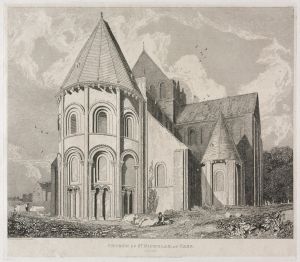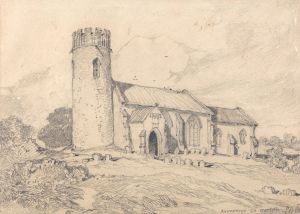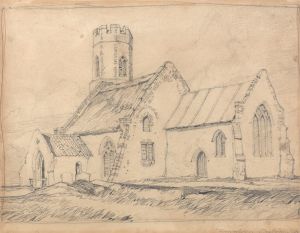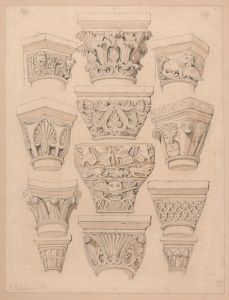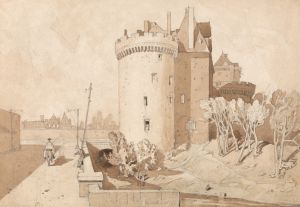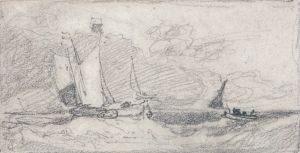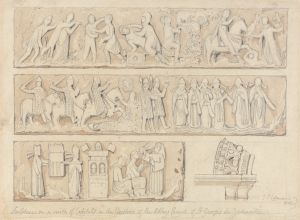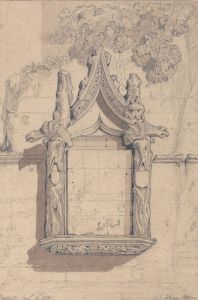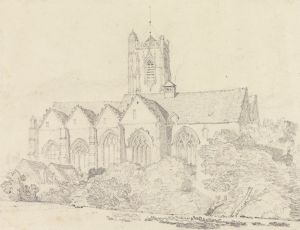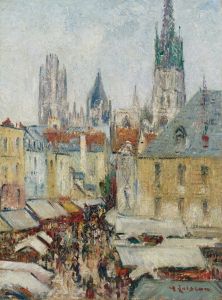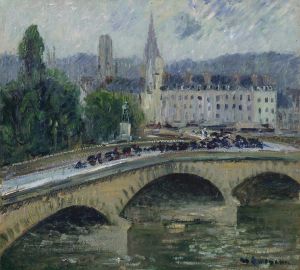
Crypt of Saint Gervaise, Rouen, Normandy
A hand-painted replica of John Sell Cotman’s masterpiece Crypt of Saint Gervaise, Rouen, Normandy, meticulously crafted by professional artists to capture the true essence of the original. Each piece is created with museum-quality canvas and rare mineral pigments, carefully painted by experienced artists with delicate brushstrokes and rich, layered colors to perfectly recreate the texture of the original artwork. Unlike machine-printed reproductions, this hand-painted version brings the painting to life, infused with the artist’s emotions and skill in every stroke. Whether for personal collection or home decoration, it instantly elevates the artistic atmosphere of any space.
John Sell Cotman was a prominent English painter and etcher associated with the Norwich School of painters, a movement known for its focus on landscape and architectural subjects. Cotman was born in 1782 in Norwich, England, and became one of the leading figures of this regional art movement. His work is characterized by its clarity, precision, and the subtle use of color, often capturing the serene beauty of the English and French countryside.
One of Cotman's notable works is "Crypt of Saint Gervaise, Rouen, Normandy." This painting is part of his extensive body of work that explores architectural themes, particularly those found in Normandy, France. Cotman traveled to Normandy several times between 1817 and 1820, where he was deeply inspired by the region's medieval architecture. These trips were instrumental in shaping his artistic focus and output during this period.
The "Crypt of Saint Gervaise" is a fine example of Cotman's architectural studies. The painting depicts the interior of the crypt of the Church of Saint Gervais in Rouen, a city renowned for its rich history and Gothic architecture. Cotman's attention to detail and his ability to convey the atmospheric qualities of the space are evident in this work. The crypt, with its Romanesque features, provides a glimpse into the historical and architectural significance of the site.
Cotman's rendering of the crypt is marked by his use of light and shadow to create depth and dimension, highlighting the structural elements of the architecture. His technique involves a delicate balance of line and wash, which allows him to capture the intricate details of the stonework and the play of light within the subterranean space. This approach not only emphasizes the physical characteristics of the crypt but also evokes a sense of tranquility and timelessness.
The painting is part of Cotman's larger series of works that document the architectural heritage of Normandy. These works were highly regarded for their accuracy and artistic merit, contributing to Cotman's reputation as a skilled draftsman and painter. His Normandy series was published as a collection of etchings, which further disseminated his work and influence.
Cotman's interest in architectural subjects was not merely aesthetic; it also reflected a broader cultural fascination with the medieval past during the early 19th century. His work aligns with the Romantic movement's emphasis on history and the sublime, capturing the grandeur and mystery of ancient structures.
"Crypt of Saint Gervaise, Rouen, Normandy" exemplifies Cotman's ability to blend artistic skill with historical interest, creating works that are both visually compelling and culturally significant. His contributions to the Norwich School and his influence on subsequent generations of artists underscore his importance in the history of British art.
Today, Cotman's works, including his studies of Normandy, are held in high esteem and can be found in major art collections, such as the British Museum and the Tate Gallery. These works continue to be appreciated for their technical excellence and their ability to transport viewers to the serene and contemplative spaces that Cotman so masterfully depicted.






